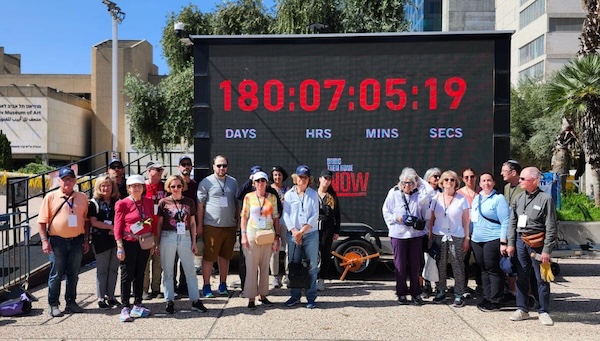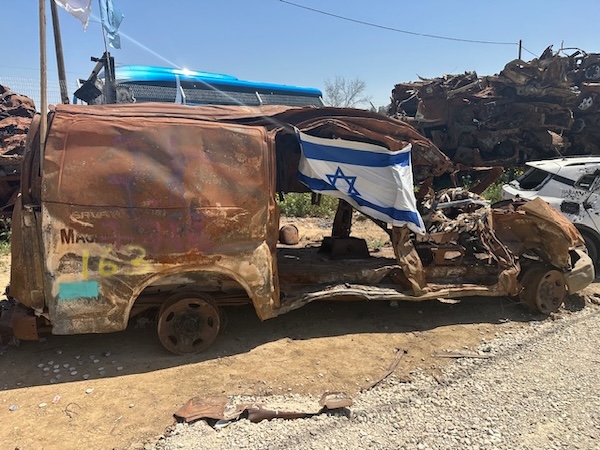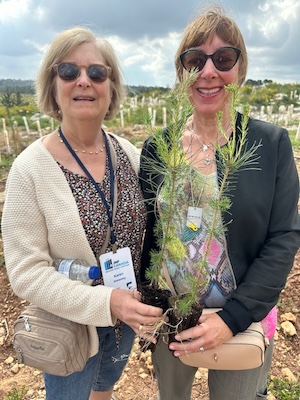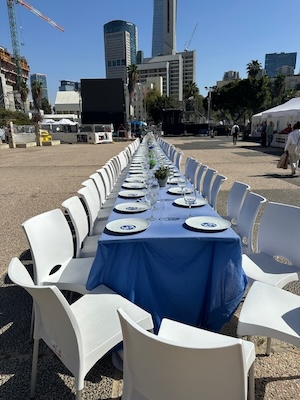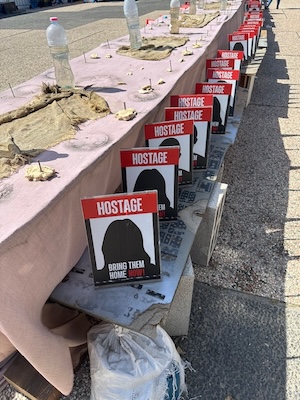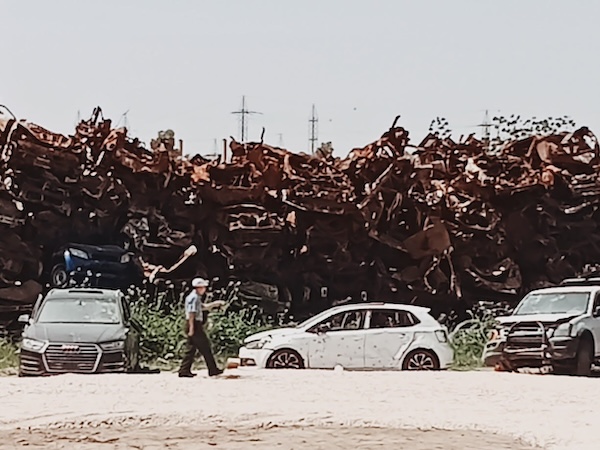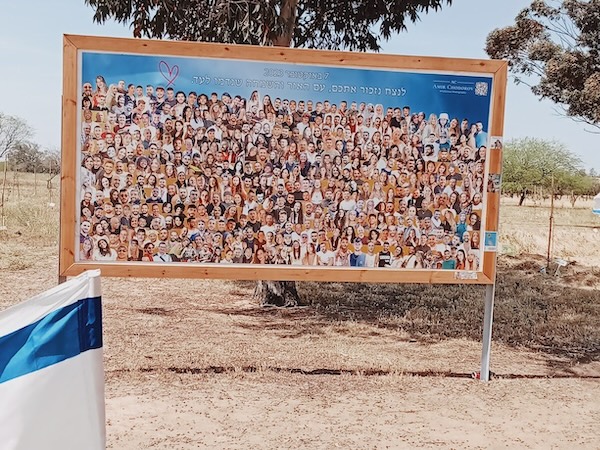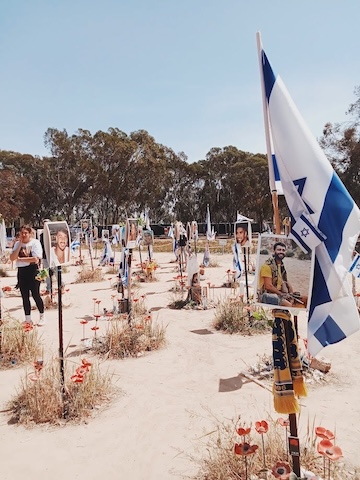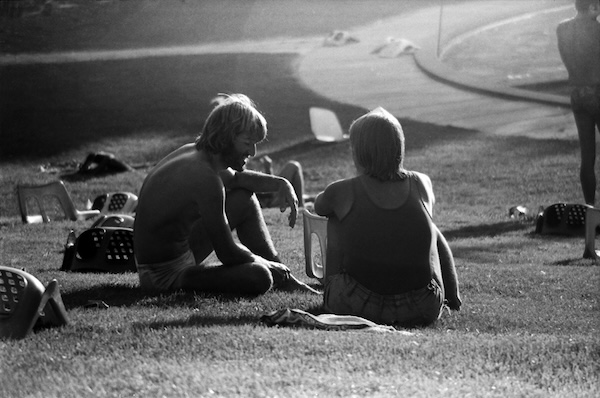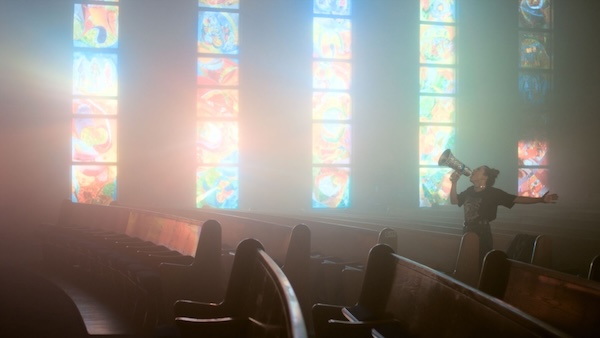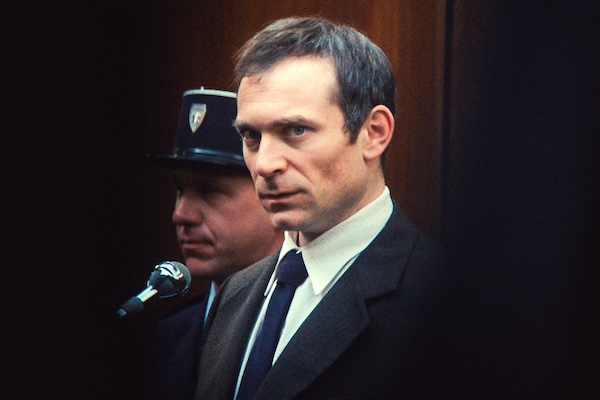A home in Kibbutz Erez. (photo by Larry Barzelai)
Spending a night in late March at Kibbutz Erez in southwestern Israel was an unforgettable experience. Visiting friends, it was somewhat eerie. Most residents have not returned since the Hamas terror attacks on Oct. 7, and the absence is profound.
The area is like a Canadian suburb. A group of houses surrounds a large grassy area, which has children’s playgrounds and lemon, orange and kumquat trees. This type of living is a rarity in Israel, where most people live in apartment buildings.
While the environment was scenic and comfortable, explosions could be heard in the distance and puffs of smoke periodically arose from Gaza, the border of which is less than a kilometre away. The Israel Defence Forces were entrenched nearby.
Kibbutz Erez fared better on Oct. 7 than many other kibbutzim and towns in the region because they received advanced warning from a neighbouring kibbutz that an attack was underway. Their neighbours had seen hang gliders from Gaza soaring overhead.
The security team of Kibbutz Erez quickly assembled to try to prevent the invaders from entering the kibbutz through the main gate. First, they called the IDF to make sure that the army wasn’t conducting an exercise. Receiving confirmation that it was a terrorist attack, the kibbutzniks asked how long it would take for the army to come – they were told they were on their own.
A firefight involving rifles, grenades and RPGs ensued. According to one of the kibbutzniks, “we fought like lions.” This was no ordinary military engagement, but a battle to protect their children and other family members from the Hamas terrorists. If they failed, they knew that Hamas would hurt their children.
Amir, one of the kibbutzniks, whose wife was expecting their first baby, was killed in the encounter. Danny received a bullet to the neck and Uri suffered wounds to his head and leg.
Liora, a nurse described as having nerves of steel, recognized that neither Danny nor Uri would survive without immediate medical attention. Both were bleeding profusely, and their level of consciousness was decreasing. With the help of a friend, she packed them into a car, drove out of the kibbutz amid a hail of bullets and got them to a nearby hospital, where they received lifesaving treatment. Both survived in relatively good physical shape.
After a fight of close to two hours, the terrorists decided that Kibbutz Erez was too difficult to overcome, and moved on to wreak havoc on the next village. The IDF did not arrive until later that day.
The whole kibbutz was evacuated to Mitzpe Ramon. Many of the families moved into hotel rooms there. After several weeks, makeshift schools were established and members of the kibbutz achieved some measure of normality, as much as it can be normal living in a hotel, totally dependent on caring neighbours, a supportive community and government help. Since then, some of the kibbutzniks have relocated to Kiryat Gat, which is much closer to their home. Some, including my friend, have returned home.
What is the future of Kibbutz Erez? People are slowly trickling back. The telling test will be in the summer, if families return in preparation for the start of the school year in September.
Kibbutz Hatzerim and Kibbutz Be’eri
Earlier in March, we visited extended family who live on Kibbutz Hatzerim, and heard about their experiences on Oct. 7.
People on Kibbutz Hatzerim awoke that day to sirens and multiple WhatsApp messages from friends and relatives, letting them know that Israel was under attack by Hamas terrorists, who were infiltrating the settlements close to the border. Were the attackers coming to Kibbutz Hatzerim, 20 kilometres west of Beer Sheva? Rumours circulated that they were on their way to Tel Aviv. People were reluctant to turn on their TVs, to protect their children from seeing the horrors that were happening. People received no directives from government sources or from the army. It was an information vacuum.
Some visitors at the kibbutz, who had arrived for Simchat Torah, decided to return to their homes in central Israel, but was it safe to drive there? Nobody knew.
Would the kibbutzniks be able to defend themselves? They did not have many weapons and the kibbutz could be easily infiltrated from several locations. But people on Kibbutz Hatzerim ended up being the fortunate ones. The terrorists were planning to move in that direction but didn’t make it that far. Apparently, they had killed and kidnapped enough people by then – 364 people killed and 44 kidnapped at the Nova music festival alone, mainly young people.
After Oct. 7, life returned to some degree of routine on Kibbutz Hatzerim. However, there were frequent missile attacks, necessitating trips to the bomb shelters. People were called up to do army service (miluim). The IDF was fighting in Gaza and soldiers were being killed. The plight of the more than 240 hostages was on everybody’s minds.
The death and destruction of some of Kibbutz Hatzerim’s neighbours is indescribable. Of special note is Kibbutz Be’eri: approximately 70 terrorists entered the kibbutz. Of the 1,000-plus residents, 97 kibbutz members were killed, 11 people were abducted and one-third of the houses were severely damaged.
Kibbutz Be’eri and Kibbutz Hatzerim have a lot in common. Hatzerim is famous for having developed the drip-irrigation technique and has a large production facility at the kibbutz. Be’eri houses one of the largest printing companies in Israel. Both kibbutzim resisted privatization, which many others had adopted as additional sources of revenue.
Hatzerim and Be’eri were both established in 1946 and both were comprised mainly of people on the left of the political spectrum. They looked forward to a peaceful future with the residents of Gaza. Many were involved in a program that transported sick people from Gaza to hospitals in Israel for advanced treatment. One of the residents of Be’eri, Vivian Silver, originally from Winnipeg, had learned Arabic to better communicate with her Palestinian neighbours, but that didn’t save her life on Oct. 7.
Currently, most residents of Kibbutz Be’eri are being housed in temporary locations, such as hotels in the Dead Sea area. They are safe and relatively free from missile attacks, but life is far from normal. Trying to reestablish a kibbutz lifestyle, while living in a crowded hotel with none of the amenities that glue kibbutzniks together, is challenging.
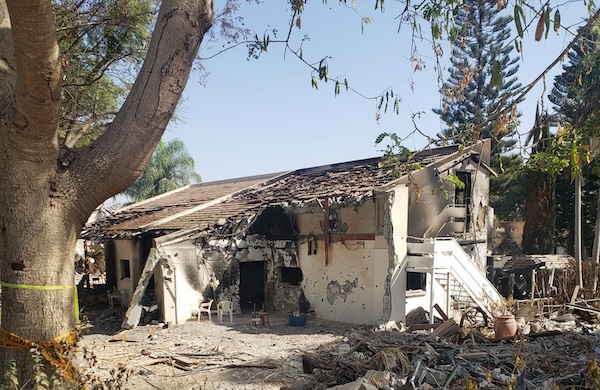
A massive building project is now underway adjacent to Kibbutz Hatzerim. A whole new temporary kibbutz to house the residents of Be’eri is under construction. The plan is to have the temporary kibbutz finished by the summer, so that families can move in before school starts in September.
Some facilities, such as medical clinics and administrative offices, will be shared by the two kibbutzim. Otherwise, the temporary Kibbutz Be’eri will have its own houses, schools and offices. Hatzerim will expand its present dental clinic, seniors lounge and grocery store to accommodate the increased needs from the larger population. In typical kibbutz fashion, members of both kibbutzim have met many times to jointly plan this project.
The ultimate plan is to rebuild the original Kibbutz Be’eri, which was mainly destroyed on Oct. 7. It is hoped that this will be accomplished within the next two years.
Kibbutz Yiron
Look at the label on your kosher wine from Israel. Most likely it comes from Kibbutz Yiron. Next year will probably be different, as the kibbutz is on the Lebanese border and has been evacuated – no one is allowed into the area. As a result, according to one kibbutz member, the pruning of the vines, which usually takes place in the spring, did not happen this year. The same kibbutznik informed me that $20,000 worth of his favourite apple, Pink Lady, was left to rot.
Kibbutz Yiron is an oasis in the desert. We have visited because we have friends who live there, but people come from many other places in Israel and elsewhere to enjoy the mountain scenery, go for hikes and rest in a peaceful environment. Lebanon is visible in the background, but the border was quiet. It is heartbreaking to see this piece of paradise abandoned.
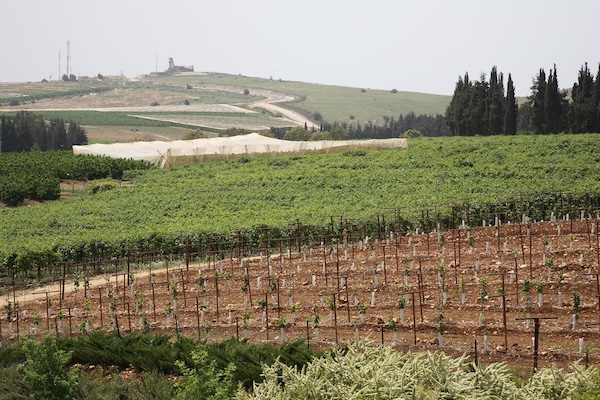
The jewel of Yiron was its Pinat Chai, a literal oasis consisting of a zoo with multiple animals, including a python, which would be taken out on non-feeding days and draped around the necks of unsuspecting visitors. Peacocks, ducks and geese roamed freely. Deer would run around their enclosed area, frequently escaping into the wider area, trying to evade recapture. A lake in the middle of the zoo was a star attraction. Row boats and paddleboats navigated the small artificial lake in a region with no natural lakes.
Kibbutz members looked forward to the day when Pinat Chai would serve as a meeting place for children and families of different origins. They anticipated a day when Lebanese children would enjoy themselves at Pinat Chai together with Israeli children.
But the zoo is now gone. The government also ordered them out of the kibbutz. The animals have been relocated to other places in Israel, and even to other countries.
The evacuation was part of a larger one that included all settlements close to the Lebanese border, like the city of Kiryat Shmona, with 22,000 inhabitants; and the town of Metulla, home of Canada Centre and one of only a few skating rinks in Israel. This area of northern Israel has special significance to the Jewish community of Vancouver, as our partnership region. Since the mid-1990s, Jewish Federation of Greater Vancouver has worked closely with Etzba HaGalil (the Galilee Panhandle).
Kibbutz Yiron was not attacked on Oct. 7. However, the northern border has heated up since then. Hezbollah has been firing many missiles into the region, sometimes 30 per day, killing several Israelis.
Villages, especially in the Gaza Envelope, are receiving government compensation and many have relocated so that they are all living as a group, whether in Mitzpe Ramon or Eilat or the hotels at the Dead Sea. People in the north have not received the same compensation, so they are widely scattered. The kibbutznik with whom I spoke is living in a village close to Haifa. When I asked him when he’s going back to his home, he said anywhere from six months to maybe a couple of years.
There are many in Israel, including government ministers, who think that a war with Hezbollah is imminent. Hezbollah’s arsenal of weapons is much larger than that of Hamas, so a war with them could be even more destructive. The IDF has been stationing additional troops in the north, as tensions rise. Many people are strengthening their bomb shelters.
Looking to the future
Oct. 7 changed Israel in dramatic ways. Stories of neglect, abandonment and destruction are legion. At the same time, Israelis have shown incredible resilience to plan and rebuild for the future.
For many years, kibbutzim have defined Israel’s borders and acted as a protective barrier, both in the north and surrounding the Gaza Strip. But will the kibbutzim be able to rebuild their lives with some semblance of security? Can they ever again trust a government and an army that so dramatically let them down?
People are slowly returning to the kibbutzim surrounding Gaza, but many may never return. For the people along the Lebanese border, the situation in some sense is more dire. They have been exiled from their residences for more than seven months. The agricultural and industrial bases of the kibbutzim economies have been shattered. When will they be able to return? Will the small-scale conflict in progress along the Lebanese-Israel border become a major war?
It’s a very challenging time to be an Israeli, especially a kibbutznik living close to Israel’s borders. Hopefully, their future will include some degree of peace and normality.
Larry Barzelai is a semi-retired Vancouver family physician, who travels to Israel frequently to visit his three grandchildren there. He is presently co-chair of the Jewish Medical Association of British Columbia.


